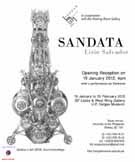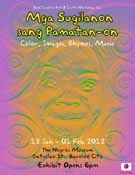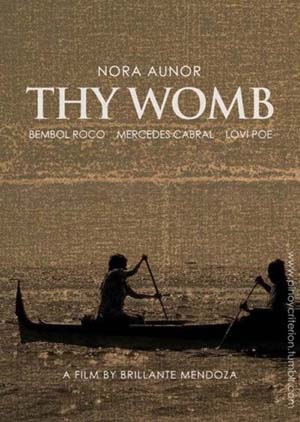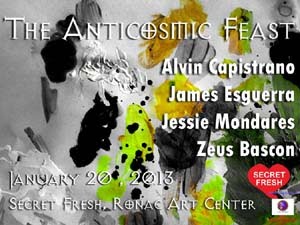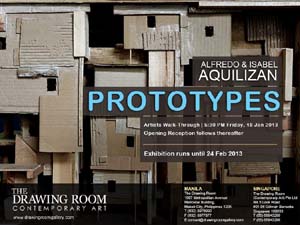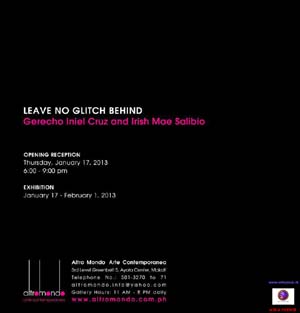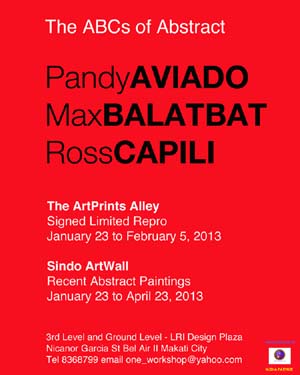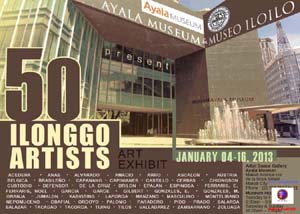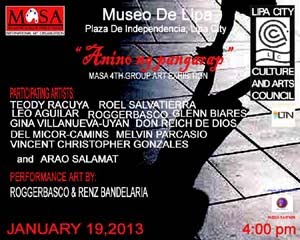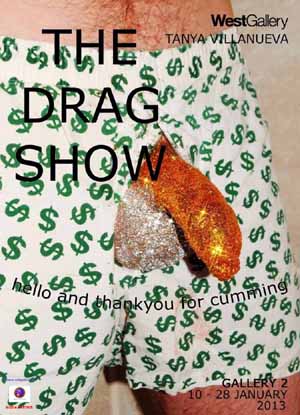
NEWS
Tuesday, January 29, 2013
Monday, January 28, 2013
Wednesday, January 23, 2013
SERRA’S THREAT TO BROAD COLLECTION
Serra’s ‘threat’ to Broad collection
Curator argues artists’ law can place “moral rights” above
historical accuracy
By Laura Gilbert. News, Issue 242, January 2012
Published online: 10 January 2013
An independent curator has claimed that Richard Serra
threatened to withdraw one of his works from the collection of Eli and Edythe
Broad if he was not allowed to rework the drawing. Magdalena Dabrowski,
speaking to an audience of lawyers and art appraisers in New York
Dabrowski organised an exhibition of drawings by Serra at New York
Some of the drawings that Serra reworked had been damaged
or destroyed, and the artist recreated them specifically for the show. The Met
hinted at this by labelling the works with two dates: that of the original and
that of the reworked version. Serra says it is not important whether audiences
know which version they are seeing. “There’s no aura of originality because
it’s an anonymous surface. It’s a difference without a value. I try to keep
surfaces as anonymous as possible,” he tells The Art Newspaper. He says he
owned the drawings he recreated, and destroyed the works they replaced.
Tuesday, January 22, 2013
Monday, January 21, 2013
Sunday, January 20, 2013
WHAT’S IN STORE FOR THE MARKET
What’s in store for the market?
The growing numbers of the super-rich should keep the
auction houses happy in 2013, but there are tougher times ahead for some
By Georgina Adam.
Comment, Issue 242, January 2012
Published online: 10 January 2013
In January 2012, the outlook for the art market was bleak,
with turmoil in the eurozone and recession in many of the world’s major
economies. Nothing changed—at the macro level, at least—throughout the year, so
art dealers finished 2012 surprised that, for many, trade was not as bad as
expected. If anything, the results at the top end of the market have never been
better; more than $1bn was spent on art during last November’s sales in New
York, with Christie’s racking up an all-time record for a contemporary art
sale, at $412m. But will we witness similar success next year?
The 1% of the 1%
I believe the top end of the art market will continue to
perform strongly, particularly in the contemporary, Impressionist and Modern
art sectors. There are a number of reasons for this. First, the building of so
many museums across the world will sustain buying. Although the reported “1,000
museums” in China Middle East , with its huge
resources, wants to establish itself as a cultural hub on a par with other,
more established centres. And billionaires’ “vanity museums”—sometimes an
unfair criticism—need to buy top works of art as well.
In this context, a recent book by Chrystia Freeland,
Plutocrats: the Rise of the New Global Super-Rich and the Fall of Everyone
Else, 2012 (Penguin Press), offers a fascinating analysis of the new global
super-rich. She sees today’s incredible wealth as the result of two
transformations: technological revolution and globalisation in the West,
coupled with an Industrial Revolution-sized burst of growth in much of the rest
of the world, leading to the convergence of two “gilded ages”.
Saturday, January 19, 2013
BATTLE LINES DRAWN TO PROTECT VIEWS OF OLE LONDON
Preservationists square off with urban planners and
developers over building skyscrapers near heritage sites like the Tower of London
By Martin Bailey. Web only
Published online: 09 January 2013
The British government is facing criticism from Unesco for
allowing the Shard, Renzo Piano’s 95-storey commercial tower, and other
skyscrapers to be built so close to the Tower of London UK
Unesco’s World Heritage Committee last year recommended
that the UK
The Shard, which will have a public viewing gallery that is
due to open to visitors in February, now looms over the medieval walls of the Tower of London Tower
of London , across the Thames near London Bridge
Preserving the views around the Tower of London
The present situation, Penrose says, lacks clarity, which
makes it difficult for developers and offers insufficient protection for the
most important views. Two years ago, English Heritage published a report to
evaluate the significance of historic urban views. Penrose now wants a more
formal solution to the problem.
Friday, January 18, 2013
Thursday, January 17, 2013
ARTISTS PRESS FOR BETTER WORKING CONDITIONS ON SAADIYAT ISLAND
Artists press for better working conditions on Saadiyat Island
The group Gulflabor has released a new letter following a
report on labour practices at future museum sites
By Helen Stoilas. Web only
Published online: 09 January 2013
As construction begins on a new $653m branch of the Louvre
museum in Abu Dhabi , a group of artists who have
spoken out against labour conditions in the Gulf released another letter
calling on all the cultural institutions opening museums on Saadiyat Island
The emirate’s Tourism, Development & Investment Company
(TDIC), which is overseeing the massive cultural development project on Saadiyat Island
Wednesday, January 16, 2013
ISTANBUL BIENNIAL TO EXPLORE THE PUBLIC DOMAIN
Istanbul Biennial to explore the public domain
Organisers launch a series of forums across the city in
lead up to event
By Gareth Harris. Web only
Published online: 08 January 2013
In contrast to the Istanbul
According to a press statement, Erdemci’s highly academic
vision will explore “the notion of the public domain as a political forum”,
touching on the notions of democracy, civilisation, barbarity, and social
engagement. An aim of the biennial is to re-examine the concept of “publicness”
(installations may also be displayed in shopping malls, hotels and office
buildings).
Tuesday, January 15, 2013
ENGLAND’S RECORD £8.6bn LOANS
Fourfold increase in value of indemnified art borrowed—and
nearly all of it returned safely
By Martin Bailey. Museums, Issue 242, January 2012
Published online: 08 January 2013
Museums and galleries in England
The increase mainly reflects the rise in prices on the art
market, particularly for major works. However, the number of venues has also
increased, largely due to new National Lottery-funded buildings, such as Tate
Modern. Works lent to national museums accounted for 75% of the £8.6bn; loans
to other venues made up the rest.
We have obtained the first detailed data on the UK ’s Government Indemnity Scheme, which is
administered by the Arts Council in England
and by the respective governments of Scotland ,
Wales and Northern Ireland UK UK
Among the exhibitions in the past financial year that
pushed up the figure was the National Gallery’s “Leonardo da Vinci: Painter at
the Court of Milan” (9 November 2011-5 February 2012).
Although only eight paintings by Leonardo were borrowed
(plus works by other artists), the works were all extremely valuable.
Monday, January 14, 2013
MIRO ON LOAN DAMAGED AT TATE MODERN
Miró on loan damaged at Tate Modern
Cost of repairs and depreciation was £203,000
By Martin Bailey. Museums, Issue 242, January 2012
Published online: 08 January 2013
An important painting by Miró was damaged in 2011 while on
loan to Tate Modern, in an incident that went unreported in the media. The work
was on loan from the Fundació Joan Miró in Barcelona
According to a visitor to the Miró retrospective, a man
leant against the picture with both hands. A spokeswoman for the Tate says that
the gallery believes it was an accident. None of the gallery’s staff witnessed
the incident.
Painting on White Background for the Cell of a Recluse I,
1968 (above), is part of a room-sized triptych, and the left-side picture is
3.5m long. The incident occurred on 7 July 2011 and the painting went back on
display eight days later, after conservation work was completed by the Tate
with advice from the Miró foundation. The conservation work would have cost a
few thousand pounds, so the £203,000 indemnity payment by the UK
After London , the Miró
retrospective travelled to Barcelona Washington , DC
Sunday, January 13, 2013
POMPIDOU SHOW IN SHANGHAI POWER STATION CAUSES A STIR
Pompidou show in Shanghai Power Station causes a stir
Work by Andy Warhol and Malcolm Morley generate mixed
reaction
By Gareth Harris. Web only
Published online: 07 January 2013
A large-scale painting by Yan Pei-Ming, International
Landscape by Night, 2011, is on show in an exhibition organised by the Centre
Pompidou at the Power Station of Art in Shanghai ,
located on the banks of the Huangpu
River China
The show, displayed across the top floor of the
seven-storey building, examines the influence of Surrealism on contemporary art
through six sections, including ones on collage and automatism. Some of the
works on display, such as an explicit painting by Malcolm Morley Cradle of
Civilisation with American Woman, 1982, and Andy Warhol’s silkscreen Big
Electric Chair, 1967-68, raised eyebrows at the exhibition launch last month.
(Warhol’s portraits of Mao Zedong will not be included in a touring
retrospective, organised by the Warhol
Museum in Pittsburgh
Saturday, January 12, 2013
GRANADA’S ALHAMBRA THROWS OPEN DOORS TO WASHINHTON IRVING’S ROYAL CHAMBERS
Rooms where American writer stayed in Spain
By Javier Pes. Web only
Published online: 06 January 2013
Visitors this month to the Moorish palace overlooking the
southern Spanish city of Granada Alhambra lived in rooms that are part of a suite
built in the early 16th century when Charles V ruled Spain
Above the door of the room known as the Emperor's Study
there is a marble plaque commemorating Irving 's
extended visit to the Alhambra during what he
described as his "rambles" around the old cities of Spain
The opening of the rooms during January is part of the Alhambra
Friday, January 11, 2013
DON’T SAY ETHNIC OR TRIBAL: THE WORD IS ‘CUSTOMARY’
Don’t say ethnic or tribal: the word is ‘customary’
The Asia Pacific Triennial pulls in Papua New Guinea and West
Asia
By Anna Somers Cocks. News, Issue 243, February 2012
Published online: 03 January 2013
In London last November, the
director of the Tate, Nicholas Serota, said that it would be spending around
£2m a year—40% of its acquisitions budget—on art from outside Europe and North America . The Guggenheim and Museum
of Modern Art in New York
There is one museum that has been working on this long
before everyone else: the Queensland Art Gallery
in Brisbane
Right-thinking Australians have become acutely sensitive to
the need not to view the West as the sole arbiter of civilisation and culture.
Serota so much admired the way Qagoma has put this message into practice that
four years ago he sent a group of curators there to learn their method, which
can be summed up as “collective effort”, both inside the gallery and out in the
field. Raffel says that they use their vast network of contacts—artists,
writers, curators, thinkers, architects, anyone involved in the material
culture of today—throughout the two-thirds of the world that they cover in the
APTs.
Thursday, January 10, 2013
SAN FRANCISCO’S WATTIS INSTITUTE GETS NEW GALLERY SPACE
And looks for a director in the new year
By Pac Pobric. Web only
Published online: 03 January 2013
The Wattis Institute for Contemporary Arts at the California College
Several new shows will inaugurate the space when it opens
on 22 January 2013, including “Claire Fontaine: Redemptions” and an exhibition
of Werner Herzog’s film “Hearsay of the Soul”, which was included in the 2012
Whitney Biennial in New York
Changes will also come to the staff at the Wattis, as it
searches for a new director after the departure of Jens Hoffmann for the Jewish
Museum, where he started as deputy director in November.
Wednesday, January 9, 2013
SITE OF MARKS
Site of Marks by ERIC ZAMUCO
When about 10 million of your compatriots are strewn around
approximately 200 countries, tropes of displacement and flux get invariably
bandied about so often that the subject plunges to cliché status and
thus get dismissed far too quickly. And yet the push and pull of diaspora
remain arguably compelling, making the case for Zamuco’s fascination with the
volatile state of objects, bodies, and places as metaphor for his own
in-betweeness patently logical. Setting up and packing house from the American
Midwest to the East Coast till finally returning to homebase in the Philippines
two months ago, Zamuco’s fascination with the tenuousness of image and
ramshackle materiality manifests this time around in Site of Marks in it’s
literally shredded traces of the artists’ recent past alluding to tenements
sitting next door to edificies now increasingly becoming iconic of our own
supposedly dragon-on-the-verge economy. These faux visceral space markers hope
to beg questions of memory’s non-fixity and seminal corporeal and
psychogeographic hindsight.
Site of Marks by ERIC ZAMUCO opens on 10 January 2013
simultaneously with Conversation 17 by CORINNE DE SAN JOSE & Mirages by
ALLAN BALISI . All shows run until 9 February 2013 at Silverlens at 2/F YMC
Bldg., II, 2320 Pasong Tamo Ext., Makati
Gallery hours are Monday to Friday from 10am to 7pm and
Saturdays from 1 to 6pm.
www.silverlensgalleries.com / facebook.com/slgalleries
Words by Eileen Legaspi-Ramirez
PORTUGESE BILLIONAIRE ADDS WORKS INSPIRED BY BAMIYAN BUDDHAS TO HIS VAST SCULPTURE PARK
Portuguese billionaire adds works inspired by Bamiyan
Buddhas to his vast sculpture park
Sculptures by Fernando Botero and Tony Cragg are also on
show in José Berardo's space north of Lisbon
By Gareth Harris. Web only
Published online: 01 January 2013
The Portuguese billionaire José Berardo has added an homage
to the sixth-century Bamiyan Buddhas, destroyed by the Taliban in 2001, to his
sculpture park in Quinta dos Loridos, north of Lisbon
On 26 February 2001, the leader of the then Taliban, Mullah
Mohammed Omar, issued an order calling for the destruction of “all statues of
non-Islamic shrines located in the different parts of the Islamic Emirate of
Afghanistan”. Within five days the Taliban said it had destroyed two-thirds of
the country’s statues, including the Bamiyan
Valley
Tuesday, January 8, 2013
CONVERSATION 17
Conversation 17 by CORINNE DE SAN JOSE
With Conversation 17, CORINNE DE SAN JOSE methodically
wraps everyday objects with fabric, neither to obscure nor hide, but to
transform the materiality of her subjects— hammer, vase, wine
bottle—into objets d’art.
Like her previous exhibit titles, Conversation 17 is a song
reference, a play on the title of a song by The National. She connects the song
to the idea of suffering from oblivion, or losing identity, grasping to control
how your surroundings affect you.
The subjects are all concealed, completely wrapped, but
there is no doubt as to what they are. By wrapping, their essential form is
revealed rather than concealed. She has picked the most mundane of objects,
binds it so that we will never know of its make or type. The selection is
deliberate; we easily associate these objects with gender—from the sharp
phallic tools to the curvy and round vessels. In the final process, the only
visible layer is what we would easily associate with the feminine—floral fabric
set against another floral fabric. Layer upon layer, the juxtaposition is at
once jarring and beautiful.
But it’s the patterns of fabric that have a mesmeric
effect, like staring into a stereogram. We are drawn in to look a few seconds
longer than we originally intended, the clashing prints a visual, tactile
overload, a still life that demands more of your time.
To wrap something is also to protect it, and the impulse to
protect, to heighten that which is basic or essential is perhaps the strongest
conceptual link to CORINNE’s past works.
Conversation 17 by CORINNE DE SAN JOSE opens on 10 January
2013 simultaneously with Mirages by ALLAN BALISI & Site of Marks by ERIC
ZAMUCO. All shows run until 9 February 2013 at Silverlens at 2/F YMC Bldg., II,
2320 Pasong Tamo Ext., Makati
Gallery hours are Monday to Friday from 10am to 7pm and
Saturdays from 1 to 6pm.
www.silverlensgalleries.com / facebook.com/slgalleries
Words by Monster Jimenez and Mario Cornejo
Words by Monster Jimenez and Mario Cornejo
TRACEY EMIN AWARDED A CBE
Tracey Emin awarded a CBE
Artists, designers and curators recognised in Britain
By Javier Pes. Web only
Published online: 29 December 2012
Artists, designers and curators are recognised in the 2013
New Year honours list. The artist Tracey Emin will receive a CBE for services
to the arts as will the curator and academic Dawn Ades, the director of the
Cultural Olympiad Ruth MacKenzie and Alex Beard, the deputy director of the
Tate. The illustrator Quentin Blake and the designer Kenneth Grange both get
knighthoods, while Stella McCartney has been awarded an OBE, as has the artist
Tacita Dean.
Monday, January 7, 2013
MIRAGES
Mirages by ALLAN BALISI
Alan Balisi's "Mirages" at SLab Gallery features
large format monochromatic paintings of jarring lyrical images cinematic in their
aplomb suspense that explore the phantasmagoria of uncertain meaning
melancholic over fictional ends.
The paintings: A man looks perplexed over a book with blank
pages. He is permeated with a foreboding existential horror creeping into
the core of his beliefs that maybe there is only nothing. A woman sits by
the bedside with a gesture that she is talking over the phone, and yet this is
uncertain because the picture seems incomplete with certain details blurred
beyond recognition. She becomes literally a mirage that parallels the fictional
capacity of picture making to embellish reality. A piece of cloth fluttering in
the wind reaches the height of the moment when it touches the peak of the
mountain, apparently, making a shape that resemble the much rigid bigger mass.
A visual pun connecting two seemingly similar forms but each having different
content, paradoxical but true, that resembles the flattened reality of
painting. A group of young men are jubilant in their celebration of the next.
The word "end' hangs above their heads, creating ambivalent connections of
what the picture could mean in terms of finality, which also opens it up to
various fictive possibilities.
The culture of copies does bring many questions pertaining
to the nature of how we perceive and interpret reality. From painting's
standpoint, some things can be taken out, or maximized to effect, without
losing grip of reality held by outward impressions, but allowing the mind to
take control of the interpretation of reality as opposed to relinquishing it
over to what the eye can normally see. Alan Balisi manipulates the picture
deftly like a narrator who tests the limits of our attention, to challenge our
notions of reality, that is, if we can still believe what we see, given the
fact that all things appear normal. Perhaps this is still what makes painting
credible, not so much because of its capacity to create an illusion, but
rather, with the way it can transform semblances of the real into replicas with
a negative aura - the other that would critique the actual. Reorganization,
repetition, revision, and patterning of internal components are characteristics
of a language that can make familiar utterances into a unique individual style.
This idiosyncratic stylization becomes essential especially within a practice
such as painting that through time has become compacted with various modes of
expression, which in itself makes it such a unique language different from
other mediums of representation. Resemblances have become mere appearances, like
the real that repeats itself everyday without alteration of our cognition of it
and yet life essentially is different from day to day depending on how we live
it, in how we use it to each of our own purpose. Alan Balisi's works had shown
us that through a touch of ironic humor, mystery, poetic reflection, and
melancholic introspection, that the language of painting facilitates critical
attention more than its mere appearance.
Mirages by ALLAN BALISI opens on 10 January 2013
simultaneously with Conversation 17 by CORINNE DE SAN JOSE & Site of Marks
by ERIC ZAMUCO. All shows run until 9 February 2013 at Silverlens at 2/F YMC
Bldg., II, 2320 Pasong Tamo Ext., Makati
Gallery hours are Monday to Friday from 10am to 7pm and
Saturdays from 1 to 6pm.
PALESTINIAN STUDENT WINS NEW SCHOLARSHIP PRIZE
Palestinian student wins new scholarship prize
Caspian Arts Foundation is raising funds for others to
study in London
By Gareth Harris. Web only
Published online: 28 December 2012
The Caspian Arts Foundation, a London-based non-profit
organisation, has awarded its inaugural education scholarship prize, enabling a
Middle Eastern student to pursue a postgraduate course at the University of the
Arts London. The award winner is Bisan Abu-Eisheh, who obtained his
undergraduate degree at the International Academy of Art in Palestine
A charity auction held last October at Christie’s Dubai London
A spokeswoman for the foundation says: “The aim is to
invite potential sponsors with interests in the Middle East and North Africa , for them to learn more about art in the
region and the foundation.”
The Caspian Arts Foundation was established last year by
Nina Mahdavi, a former consultant in property portfolio investment and
management.
Sunday, January 6, 2013
PROPOSAL TO SELL PHOTOGRAPH BY MUNCH IN OSLO MUSEUM TO POMPIDOU PROVES CONTROVERSIAL
Proposal to sell photograph by Munch in Oslo
Politicians to decide whether to deaccession self-portrait
bequeathed to the city
By Clemens Bomsdorf. Web only
Published online: 27 December 2012
A proposal to sell a vintage print of a photograph by
Edvard Munch to the Centre Pompidou, Paris, has been met with criticism in Oslo
The print is in the collection of the Munch
Museum , Oslo
At the end of November, the government of Oslo
But Ivar Johansen, a member of the city parliament for the
left-wing party SV, says that in Munch’s will, the artist said he wanted his
works to be kept together. Any sale runs counter to Munch’s wishes, Johansen
says. A long-term loan would be a better solution in order to increase access
Munch’s works, he says, fearing that if the sale goes ahead other will
follow.
The city government is asking parliament to vote on whether
to sell further photographs by Munch, “when such cases are coming up and are
justified from a professional point of view”, says the report to politicians. A
decision is due to be made in 2013.
Saturday, January 5, 2013
OPPONENTS FEAR BILLION-ROUBLE SCHEME TO “PRESERVE AND REDEVELOP” CENTRAL ST. PETER
Opponents fear billion-rouble scheme to “preserve and
redevelop” central St Petersburg
Conservationists and planning experts say $2.8bn pilot
projects are a threat to historical character of the heart of the city
By Sophia Kishkovsky. Web only
Published online: 26 December 2012
Conservationists who fought attempts by Gazprom, the
State-controlled gas giant, to build a skyscraper opposite the Smolny Convent
complex in the centre of St Petersburg are now facing another threat to the
city’s architectural heritage—government plans to redevelop two historic
districts in the city centre.
A resolution passed by the city legislature, signed by the
St Petersburg governor Georgy Poltavchenko in November, singles out the
neighbourhoods of Konyushennaya and North Kolomna-New Holland for “preservation
and development” as part of a “special purpose programme” that is due to start
this year and be completed by 2018. The city says that the cost of the
redevelopment will be $2.8bn, with $2.2bn coming from the municipal budget and
$579m from private investors. Poltavchenko said last summer that overhauling
the entire city centre would cost an estimated $129.5bn.
The project is meant to serve as a pilot for the rest of
the historical centre of St Petersburg State Russian
Museum Holland
City officials say the redevelopment will preserve historic
buildings (if necessary by rebuilding them). They also want to rehouse people
living in communal apartments, which are a throwback to the Soviet era, and
create new pedestrian zones.
Friday, January 4, 2013
VAST DATABASE OF ITALIAN CHURCH’S ART AND ARTEFACTS GOES LIVE
Vast database of Italian church’s art and artefacts goes
live
Experts generally positive, but Florence
and Naples
By Ermanno Rivetti. Web only
Published online: 24 December 2012
The Vatican
The website contains almost 3.5m objects, from paintings
and sculptures to ornaments, crucifixes, altarpieces and other items belonging
to some of Italy Florence and Naples
The project is a collaboration between Church and State,
involving the dioceses, the Ministry of Culture, the Italian Episcopal
Conference and the National Office for Ecclesiastical Heritage. Initial funding
was set at around €51.6m.
The database will eventually be expanded to include the
Church’s architectural heritage and literary archives.
Users can search by artist, subject matter, object, diocese
and date range and the search results can be filtered further if needed, but
experts have pointed out a number of flaws in the system that suggest more work
is needed.
David Ekserdjian, an art historian and curator, who
specialises in the 16th-century Italian Renaissance, says the database has a
number of absences and inconsistencies. For example, a copy of Caravaggio’s
Madonna of Loreto, 1604-06, is registered in the diocese of Siena ,
Tuscany , and dated to between 1600 and 1649,
whereas the original, in the church of
Sant’Agostino , Rome
Thursday, January 3, 2013
RUSSIANS INVITED TO BUY BACK OR RENT THEIR OLD FAMILY ESTATES
Russians invited to buy back or rent their old family
estates
Culture minister backs plan to save historic monuments
heading to rack and ruin by privatising them
By Sophia Kishkovsky. Web only
Published online: 22 December 2012
The Russian culture minister Vladimir Medinsky has begun a
campaign to auction pre-revolutionary estates and mansions to save them from
potential ruin. He said that architectural monuments in the worst condition
would be a priority and would be offered for long-term rent or even sale to
those who can demonstrate that they are committed to restoration.
After the collapse of the Soviet Union, Russia
Medinsky said that the government had failed to follow
through on previous plans to manage the properties and that the situation had
reached a crisis point.
“There are 150,000 [architectural] monuments in the
country,” said the minister according to the RIA Novosti state news agency.
“Some of them are in private hands, a majority are in state hands and even more
are in a state of ruin. About ten years ago there were instructions to hand
over about 2,500 monuments to the monuments administration agency. [But] the
government’s instruction was not carried out. Two hundred and forty-one
monuments were handed over. The monuments are in [a] horrific condition.”
Medinsky said that the ministry had already proposed that
Rosimushchestvo, the state property agency, auction the right to rent those
sites that are in good condition at market rates, on the condition that they
are properly maintained. Sites that are in a ruined state would be leased at a
peppercorn rate. Olga Dergunova, Russia
Subscribe to:
Posts (Atom)





































































































































